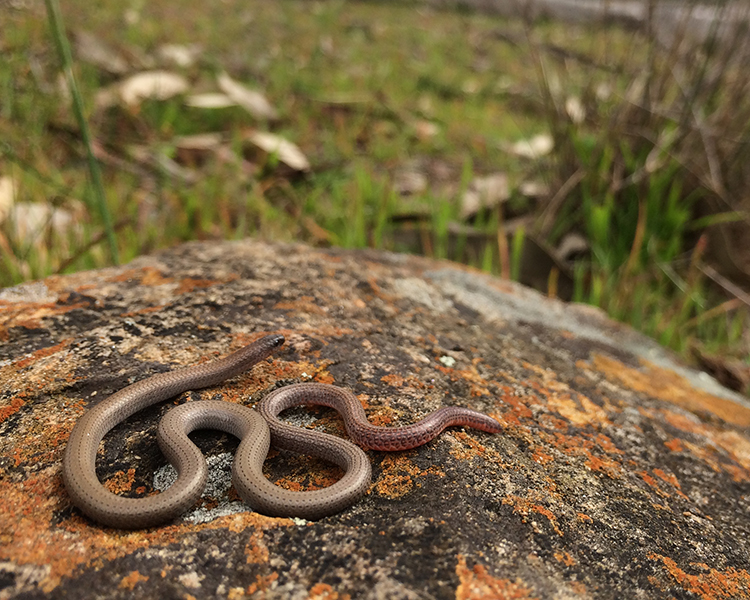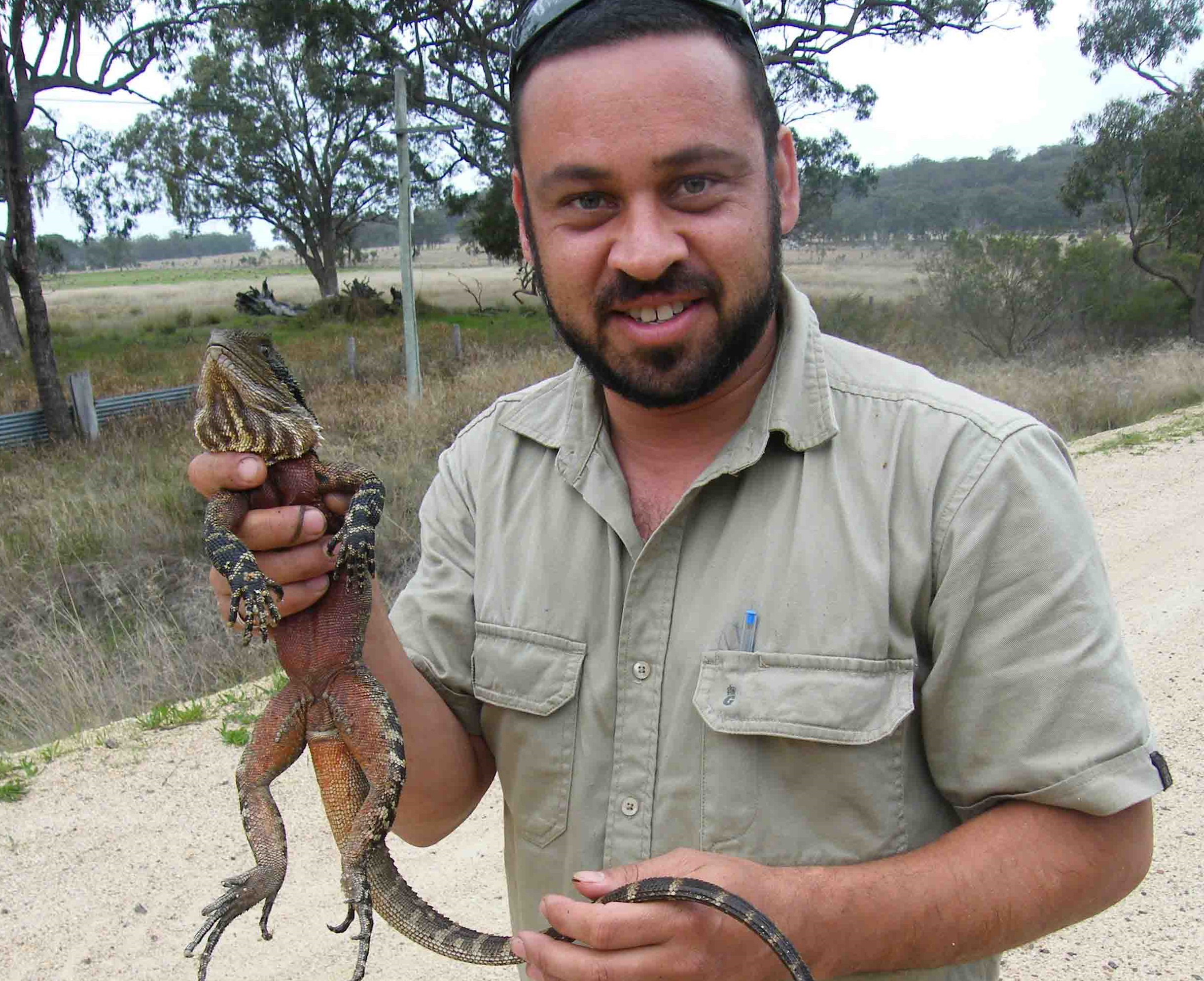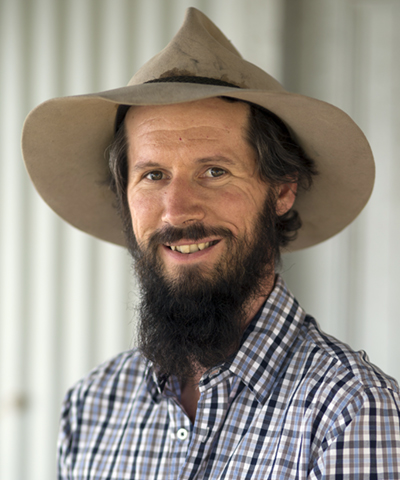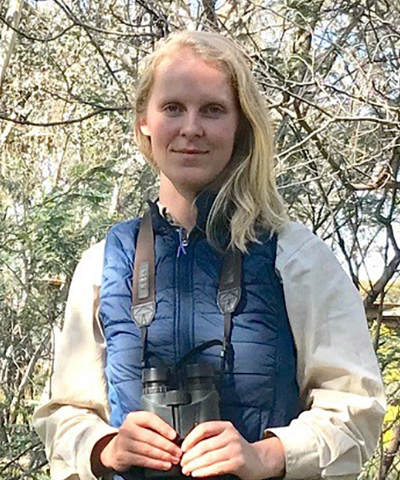
Project: 1.2.1.6
Enhancing critical habitat for the pink-tailed worm-lizard in agricultural landscapes
Project Leaders: Daniel Florance
Research in Brief
Box Gum Grassy Woodland and derived native grassland, is an endangered ecological vegetation community which often occurs in agricultural landscapes. Within this community rocky outcrops provide critical habitats for a wide range of flora and fauna, such as the vulnerable Pink-tailed Worm-lizard.
While substantial resources and effort are being invested in the conservation of these woodlands, some conventional and emerging agricultural practices degrade and destroy small rocky outcrops and paddocks of bushrock, which has major implications for the persistence of small mammals, reptiles and invertebrates. This project will develop and trial novel methods for restoring critical rock habitat in farming landscapes and will evaluate the response of threatened grassy woodland vegetation and reptile communities to these techniques. 

Pink-tailed Worm-lizard. Photo: Damian Michael
Why is the research needed?
The temperate eucalypt woodlands of south-eastern Australia are among the most heavily cleared vegetation communities in Australia. An estimated 85% of Box Gum Grassy Woodland has been cleared for agriculture, with remaining areas occurring as degraded, isolated fragments.
Small rocky outcrops and areas with bushrock are important features of ecological vegetation communities. However, many rocky outcrops are quarried, cleared of native vegetation, overgrazed by livestock and feral herbivores, or suffer from invasive weeds or inappropriate fire regimes. Furthermore, bushrock is collected for commercial use or destroyed to increase areas of arable land. New machinery has been developed and is being used to rip and crush surface rocks and small rocky outcrops in parts of Western Australia, South Australia and Victoria.
A wide variety of small mammals, reptiles, invertebrates and plants are reliant on bushrock and small rocky outcrops. At least 180 vertebrate species are dependent on rocky outcrops for their survival in Australia, of which, more than 50 are threatened.
Both bushrock and rocky outcrops provide animals with shelter, protection from predators and refuge from fire or extreme weather conditions. Rocky outcrops provide habitat for specialised plants and vegetation communities, and serve an important ecosystem function by helping to maintain macro and micro environments, retaining soil moisture, stabilising slopes, reducing soil erosion, and reducing the effects of fire.
The removal of bushrock is listed as a key threatening process under the Threatened Species Conservation Act NSW (TSC Act). However, the determination does not include the removal of rock from approved quarrying activities, the salvage of rock where the removal of the rock is necessary for carrying out a development or activity with an existing approval under the Environmental Planning and Assessment Act 1979, or the removal of rock from paddocks when it constitutes a necessary part of the carrying out of a routine agricultural activity.
Many species are negatively affected by the loss of these critically important microhabitats, including the threatened Pink-tailed Worm-lizard, Striped Legless Lizard, Grassland Earless Dragon, Little Whip Snake and Broad-headed Snake.

Project leader and senior research officer, Dr Damian Michael examining a Burton’s snake lizard . Photo: Chris Spraggon
What research activities are being undertaken?
Over the past ten years, researchers from The Australian National University have discovered more than 15 new populations of the nationally vulnerable Pink-tailed Worm-lizard from agricultural regions in southern New South Wales.
This project will build on this by systematically surveying threatened reptiles on a large number of grazing properties in southern New South Wales.Sites that support suitable populations of threatened reptiles will be selected for inclusion in a habitat restoration experiment.Artificial rocks (bricks and pavers) and salvaged bushrock will be experimentally added to sites that support Pink-tailed Worm-lizard populations. Grazing regimes on these sites will be modified and the response of native vegetation, threatened reptiles and other woodland dependent reptile species will be monitored.
Trials will compare sites that are excluded from grazing with sites that are strategically grazed, stratified by the addition of varying amounts and types of rock microhabitat.Reptiles will be individually marked using visual implant elastomers and genetic samples will be collected to evaluate small-scale movement patterns, colonisation of newly restored rock habitat, population dynamics and dispersal ability.Findings will be communicated to Local Land Services to inform their adaptive management framework and financial incentive programs.
Who is involved?
The project will work collaboratively with the Central Tablelands, South East and Riverina Local Land Services, Landcare groups and local communities. Research expertise will also be drawn from the ACT Parks and Wildlife Authority, Canberra University and The Australian National University.
Where is the research happening?
The research will be primarily conducted across parts of the Lachlan catchment, within regions managed by the Central Tablelands, South East and Riverina Local Land Services, with most surveys and experimental trials occurring between Cowra, Young and Boorowa.
When is the research happening?
The project will commence in 2018 and will run until mid 2021.
Daniel Florance - daniel.florance@anu.edu.au
Top Image: Degraded rocky outcrop in a grazing landscape. Photo: Damian Michael








